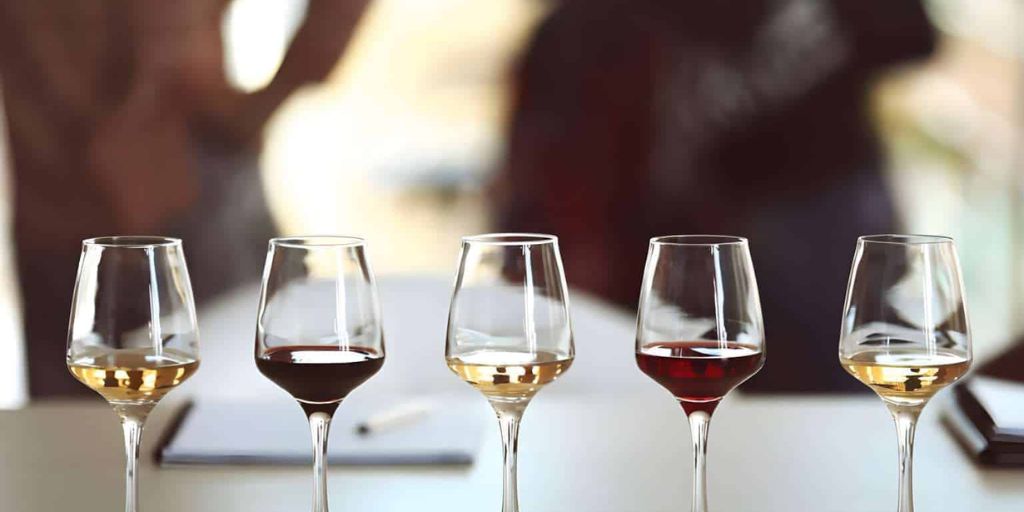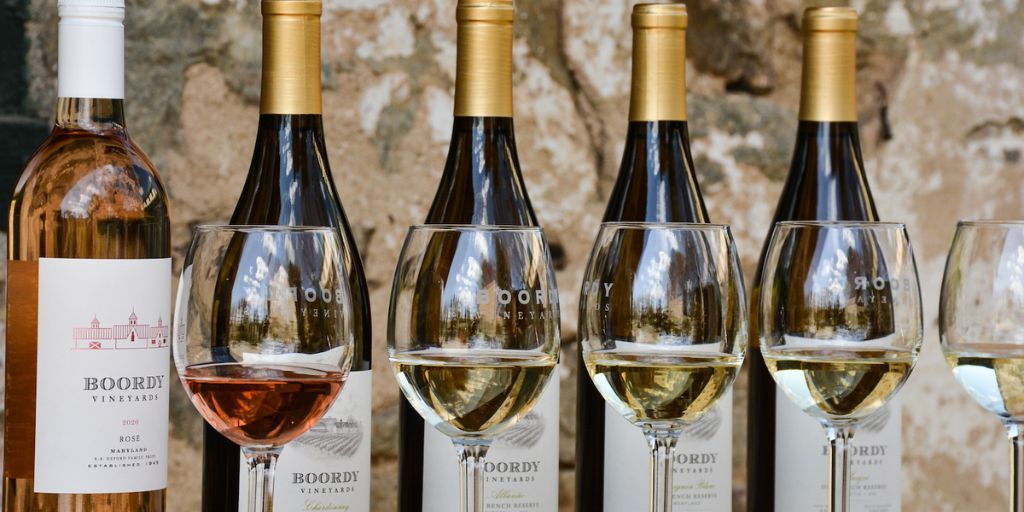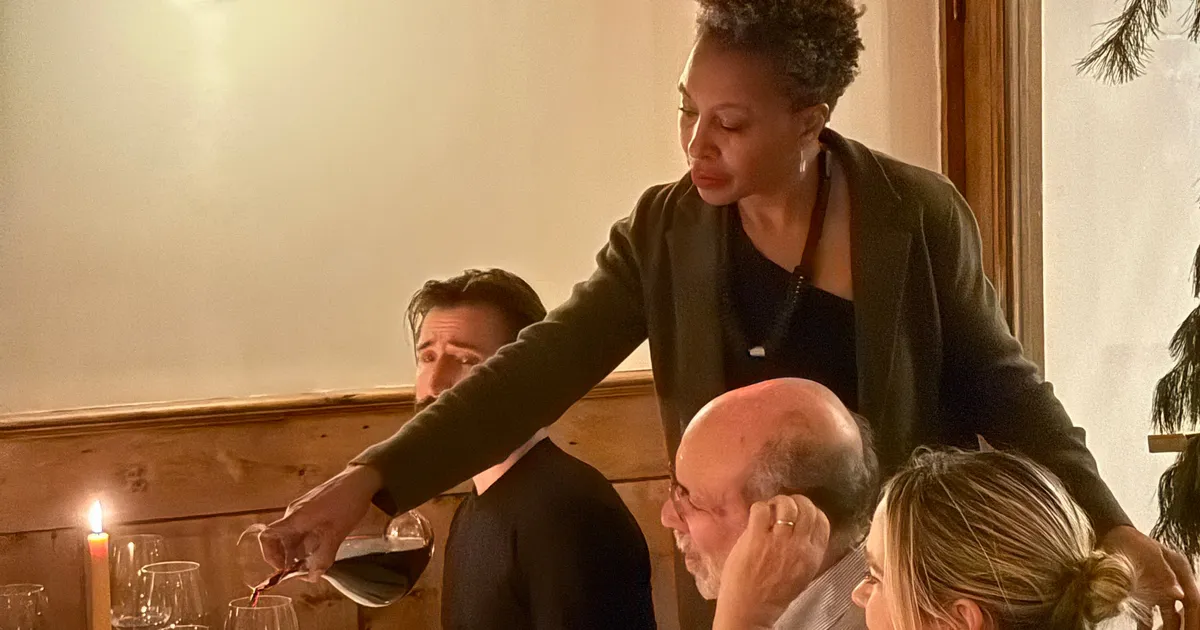If you’ve ever looked at a wine bar menu and seen the term “wine flight” but weren’t quite sure what it meant, you’re not alone. Despite its elegant-sounding name, a wine flight is actually one of the most approachable and enjoyable ways to discover new wines—no prior knowledge required.
Instead of committing to a full glass or bottle, a wine flight gives you the chance to sample multiple wines side-by-side, compare their flavors, and learn what you enjoy most.
Whether you’re a complete beginner, a curious wine drinker looking to expand your palate, or someone planning a visit to a tasting room or winery, wine flights offer a fun and educational experience.
In this article, we’ll break down what a wine flight is, the different types you’ll encounter, how to taste like a pro, and how to make the most of your next tasting adventure.
What Is a Wine Flight?
A wine flight is simply a tasting selection of several small pours of different wines, usually served together on a tray or board. The idea is to compare and contrast various styles, grapes, or regions, often served in 2–3 oz (60–90 ml) glasses. A flight usually contains three to five wines, though you may occasionally see more.
The term “flight” refers to the presentation of multiple things grouped together, similar to a flight of stairs or a flight of beers in a brewery. The wines in a flight are selected to give you a curated tasting journey—whether it’s exploring one varietal across different regions or sampling a range from light to bold.
Types of Wine Flights
Wine flights can be tailored around several themes. Here are some common formats:
1. By Grape Variety (Single-Varietal Focus)
A flight may showcase the same grape (e.g., Pinot Noir) from different wineries or regions, helping you understand how climate and soil impact flavor.
-
Example: Oregon Pinot Noir vs. Burgundy Pinot Noir vs. California Pinot Noir
2. By Region
Flights based on regions highlight local wines and help you explore the terroir of a specific place.
-
Example: Wines of Napa Valley, Tuscany, or Mendoza
3. By Style
Some flights explore wine styles such as sparkling, rosé, dessert wines, or natural wines.
-
Example: Sparkling Flight – Champagne, Prosecco, Cava, and Crémant
4. By Color (Red, White, Rosé)
Great for beginners, this lets you taste a mix of wine colors and bodies.
-
Example: Sauvignon Blanc, Rosé of Grenache, and Cabernet Sauvignon
5. Progressive Tasting (Light to Bold)
This approach arranges wines from lighter, more delicate ones to bolder, fuller-bodied selections.
-
Example: Pinot Grigio → Chardonnay → Merlot → Syrah → Zinfandel
Why Try a Wine Flight?
Wine flights are ideal for both novices and enthusiasts. Here’s why:
-
Low commitment: You can try multiple wines without buying a full glass or bottle.
-
Side-by-side comparison: Tasting wines together helps you better identify differences in flavor, texture, and aroma.
-
Educational: Learn what you like and don’t like in a controlled, guided way.
-
Fun and social: Great for sharing and discussing with friends or a group.
Whether you’re trying to develop your palate or just want to try something new, a wine flight offers a structured but casual way to experiment.
How to Taste a Wine Flight Properly
Tasting wine isn’t about following a rigid set of rules. Still, knowing a few basics can help you enjoy a wine flight to its fullest:
1. Start Light, End Bold
Drink wines in order from light-bodied to full-bodied. Drinking a heavy red first can overwhelm your palate and make lighter wines seem bland.
2. Use the Five S’s of Wine Tasting
Follow these five simple steps to get the most from each pour:
-
See: Look at the wine’s color and clarity.
-
Swirl: Gently swirl the glass to release aromas.
-
Smell: Inhale deeply. Try to identify scents like fruit, spice, or wood.
-
Sip: Take a small sip and let it coat your mouth.
-
Savor: Note the flavors, texture, and finish (how long the taste lingers).
3. Take Notes
Many tasting rooms or wine bars will give you a tasting sheet to jot down thoughts. Even if not, it’s helpful to mentally note which ones you liked and why. Did you prefer fruity over oaky? Dry over sweet?
4. Cleanse Your Palate
Sip water between wines and, if available, nibble on plain crackers or bread to reset your palate. Avoid strong flavors (like spicy or garlicky foods) before or during your flight.
What to Expect at a Wine Bar or Tasting Room
When you order a wine flight at a restaurant or winery, it may be pre-set or customizable. A server or sommelier will typically explain each wine, including:
-
Grape variety
-
Region
-
Producer
-
Flavor notes
-
Pairing suggestions
Some upscale tasting rooms may offer flights with small bites or cheese pairings, enhancing the experience further. Don’t hesitate to ask questions—staff are usually happy to guide you.
If you’re at a winery, expect a more immersive experience. You might hear stories about the vineyard, winemaker, and how each wine was produced. It’s a great way to support local businesses while expanding your knowledge.

Tips for Enjoying a Wine Flight
To ensure you make the most of your wine flight, keep these tips in mind:
1. Go With Friends
Wine flights are ideal for groups—you can compare notes, swap glasses, and share preferences. Just be sure not to overdo it if you’re sampling multiple flights.
2. Ask for Guidance
Not sure what to choose? Describe what you typically like in a drink (sweet, fruity, dry, bubbly), and a knowledgeable server can build a flight tailored to you.
3. Don’t Be Intimidated
There’s no wrong way to enjoy a wine flight. You don’t need to identify every note or use wine jargon. Just taste, enjoy, and observe what stands out to you.
4. Stay Hydrated
You may be tasting several ounces of wine—enough to feel tipsy if you’re not careful. Sip slowly, drink water, and know your limit.
Common Wine Flight Mistakes to Avoid
To make your experience more enjoyable, avoid these common pitfalls:
-
Not pacing yourself: Flights can sneak up on you. Take your time.
-
Skipping food: Wine on an empty stomach is never a good idea.
-
Comparing wine quality too harshly: One wine might be more to your liking than another, but all wines in a flight are usually selected with care.
-
Ignoring the order: Starting with a bold red can overshadow more delicate wines in the lineup.
Conclusion: A Flight Is the Best Way to Explore
Wine flights are more than just a fun way to taste—they’re a learning experience wrapped in enjoyment. They allow you to explore different flavors, regions, and styles without overwhelming commitment. Whether you’re a seasoned connoisseur or a total novice, wine flights provide the chance to refine your palate, discover new favorites, and enjoy wine in a more interactive way.
Next time you see a flight menu at a restaurant or wine bar, don’t shy away. Embrace it as an invitation to learn more about what you like—and what you might want to explore next. Who knows? That small pour of Albariño or Tempranillo just might become your new go-to bottle.


